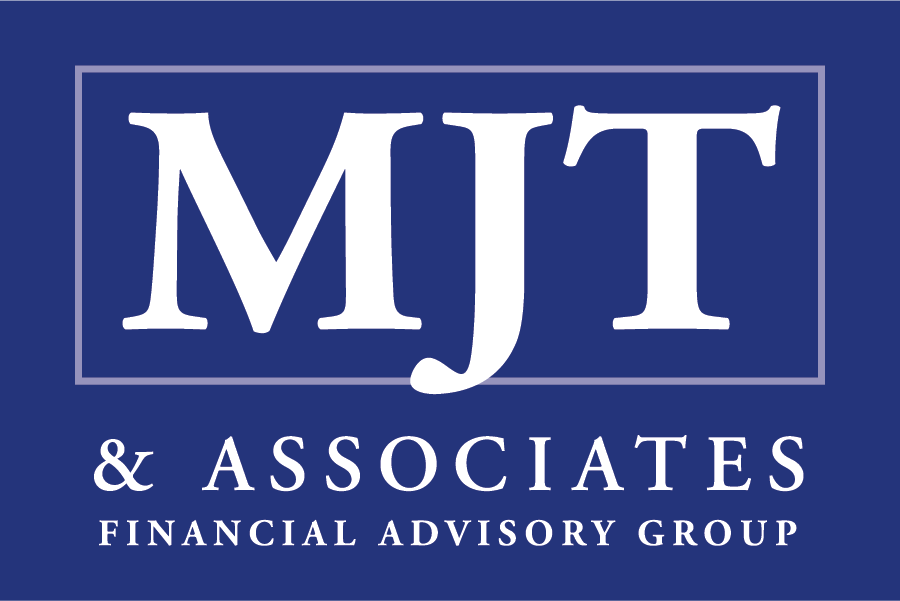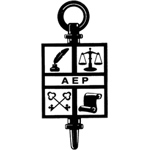Are you prepared for a secure retirement? Many people dream of enjoying their golden years without financial worries, but achieving this requires careful financial planning. This article will explore the importance of financial planning for a secure retirement and provide valuable insights to help guide you on your path to financial independence.
Financial planning is more than just managing your money; it involves setting goals, creating a budget, and making informed decisions about your investments. By planning ahead, you can ensure that you have enough savings to cover your expenses, enjoy the lifestyle you desire, and have a safety net for unexpected events.
Having a retirement plan in place helps you manage your finances effectively, maximize your savings, and optimize your investments. It allows you to make proactive choices about your future, rather than relying on chance or luck.
Whether you are in your 20s or already approaching retirement age, it's never too early or too late to start planning for your financial future. So, let's dive into the world of financial planning and discover how it can set you on the path to a secure retirement.
Understanding the Importance of Financial Planning
Financial planning is more than just managing your money; it involves setting goals, creating a budget, and making informed decisions about your investments. By planning ahead, you can ensure that you have enough savings to cover your expenses, enjoy the lifestyle you desire, and have a safety net for unexpected events.
One of the key reasons financial planning is crucial for a secure retirement is that it allows you to have control over your financial future. Instead of leaving things to chance, you can make proactive choices that align with your goals and aspirations. Financial planning helps you assess your current financial situation, identify gaps, and develop strategies to bridge those gaps. It gives you a clear roadmap to follow, making it easier to make informed decisions about your money.
Additionally, financial planning helps you optimize your savings and investments. By having a plan in place, you can determine how much you need to save each month to reach your retirement goals. It also allows you to make smart investment choices that align with your risk tolerance and time horizon. Over time, these strategic decisions can lead to significant growth in your retirement savings, giving you the peace of mind you need for a secure future.
Benefits of Financial Planning for Retirement
There are numerous benefits to engaging in financial planning for retirement. Firstly, it helps you maintain your desired lifestyle during your golden years. By understanding your income sources, expenses, and potential risks, you can ensure that you have enough funds to support your chosen lifestyle. Financial planning allows you to determine the level of income you need in retirement and create a plan to achieve it.
Secondly, financial planning helps you navigate the complexities of retirement. It involves understanding the various retirement accounts, tax implications, and government benefits that may be available to you. Having a comprehensive plan in place ensures that you make the most of these opportunities and avoid any potential pitfalls.
Furthermore, financial planning allows you to anticipate and prepare for unexpected events. Life is full of uncertainties, and having a contingency plan is crucial. By setting up an emergency fund and considering insurance options, you can protect yourself and your loved ones from financial hardships that may arise.
Financial planning provides peace of mind. Knowing that you have a well-thought-out plan in place can alleviate stress and anxiety about the future. It allows you to focus on enjoying your retirement and pursuing your passions, knowing that your financial well-being is secure.
Common Retirement Planning Mistakes to Avoid
While financial planning is essential for a secure retirement, it's important to be aware of common mistakes that can derail your plans. By avoiding these pitfalls, you can stay on track and achieve your retirement goals.
One common mistake is underestimating the amount of money needed for retirement. Many individuals fail to account for inflation, rising healthcare costs, and other factors that can significantly impact their expenses. It's crucial to carefully consider your lifestyle and spending patterns when estimating your retirement needs.
Another mistake is relying solely on Social Security benefits. While Social Security can provide a valuable source of income in retirement, it's unlikely to be sufficient to cover all your expenses. It's important to build additional savings through retirement accounts, investments, and other sources of income.
Procrastination is a common enemy of retirement planning. Waiting too long to start saving and investing can significantly limit your options and make it harder to achieve your goals. It's best to start as early as possible and take advantage of the power of compounding to grow your savings over time.
Failing to regularly review and adjust your retirement plan can be detrimental. Life circumstances change, and your financial plan should reflect these changes. Regularly reassessing your goals, expenses, and investment strategies will ensure that you stay on track and make any necessary adjustments to your plan.
Steps to Create a Retirement Financial Plan
Creating a retirement financial plan may seem daunting, but breaking it down into smaller steps can make the process more manageable. Here are some key steps to help you get started:
- Assess your current financial situation: Begin by understanding your income, expenses, assets, and liabilities. This will give you a clear picture of where you stand financially.
- Set retirement goals: Determine what you want your retirement to look like. Consider factors such as the age you want to retire, the lifestyle you desire, and any specific goals you have for your retirement years.
- Estimate your retirement expenses: Calculate your anticipated expenses in retirement, including housing, healthcare, travel, hobbies, and any other costs you expect to incur.
- Determine your retirement income sources: Identify all potential sources of income in retirement, such as Social Security, pensions, retirement accounts, and other investments.
- Bridge the retirement income gap: Compare your estimated expenses with your expected income. If there is a shortfall, consider strategies to bridge the gap, such as increasing your savings rate or adjusting your investment strategy.
- Develop an investment strategy: Determine the appropriate asset allocation and investment vehicles based on your risk tolerance, time horizon, and financial goals. Consider diversifying your investments to minimize risk.
- Create a budget: Develop a budget that aligns with your retirement goals. This will help you manage your expenses and ensure that you're saving enough to meet your retirement needs.
- Review and adjust your plan regularly: Regularly reassess your retirement plan to account for any changes in your circumstances or goals. This will ensure that your plan remains relevant and effective.
Key Components of a Secure Retirement Plan
A secure retirement plan encompasses several key components that work together to ensure financial stability and peace of mind. These components include:
- Adequate savings: Building a sufficient nest egg is crucial for a secure retirement. Aim to save at least 15-20% of your income and take advantage of employer-sponsored retirement plans, such as 401(k)s or IRAs.
- Diversified investments: Spreading your investments across different asset classes can help mitigate risk and maximize returns. Consider a mix of stocks, bonds, real estate, and other investment vehicles based on your risk tolerance and time horizon.
- Insurance coverage: Protecting yourself and your assets is essential. Consider insurance options such as health insurance, long-term care insurance, and life insurance to safeguard against unexpected events.
- Estate planning: Having a comprehensive estate plan in place ensures that your assets are distributed according to your wishes and minimizes taxes and legal complications. Consider creating a will, establishing trusts, and designating beneficiaries for your accounts.
- Healthcare planning: Healthcare costs can be a significant expense in retirement. Research and plan for Medicare coverage, supplemental insurance, and long-term care options to ensure you have adequate healthcare coverage.
- Social Security optimization: Understand the ins and outs of Social Security to maximize your benefits. Consider factors such as when to start claiming benefits and how your decisions may impact your overall retirement income.
By addressing these key components in your retirement plan, you can create a solid foundation for a secure and fulfilling retirement.
Retirement Savings Options and Investment Strategies
When it comes to retirement savings, there are several options and investment strategies to consider. Each option has its pros and cons, and choosing the right approach depends on your individual circumstances and goals. Here are some common retirement savings options and investment strategies to explore:
- Employer-sponsored retirement plans: Many employers offer retirement plans such as 401(k)s or 403(b)s, which allow you to contribute pre-tax dollars and potentially receive matching contributions from your employer. Take advantage of these plans to maximize your savings.
- Individual Retirement Accounts (IRAs): IRAs are tax-advantaged retirement accounts that allow you to save for retirement. Traditional IRAs offer tax deductions on contributions, while Roth IRAs provide tax-free withdrawals in retirement.
- Taxable investment accounts: If you've maxed out your contributions to retirement accounts, consider investing in taxable brokerage accounts. These accounts offer flexibility and access to a wider range of investment options.
- Diversified asset allocation: A well-diversified investment portfolio is crucial for long-term growth and risk management. Consider allocating your investments across different asset classes, such as stocks, bonds, real estate, and commodities.
- Dollar-cost averaging: Investing a fixed amount regularly, regardless of market conditions, can help smooth out market volatility and potentially lower your average cost per share.
- Regular portfolio rebalancing: Periodically review and rebalance your investment portfolio to ensure that it aligns with your risk tolerance and long-term goals. This involves selling investments that have performed well and buying those that are underperforming to maintain your desired asset allocation.
Remember, each individual's financial situation is unique, and it's essential to consult with a financial advisor or professional to determine the best retirement savings options and investment strategies for you.
Tools and Resources for Retirement Planning
Fortunately, there are numerous tools and resources available to assist you in your retirement planning journey. These resources can help you gain insights, make informed decisions, and track your progress towards your retirement goals. Here are a few helpful tools and resources to consider:
- Retirement calculators: Online retirement calculators can help you estimate how much you need to save for retirement and whether you're on track to meet your goals. They take into account factors such as your current savings, expected income, and desired retirement age.
- Personal finance apps: There are numerous mobile apps available that can help you track your spending, save money, and manage your investments. These apps often provide budgeting tools, investment tracking, and retirement planning features.
- Online educational resources: Many reputable financial institutions, government agencies, and non-profit organizations offer free educational resources on retirement planning. These resources include articles, videos, webinars, and interactive tools to help you enhance your financial knowledge.
- Social Security Administration: The Social Security Administration's website provides valuable information on retirement benefits, eligibility, and claiming strategies. Use their online tools to estimate your Social Security benefits and explore different claiming scenarios.
- Employer resources: If you have an employer-sponsored retirement plan, your employer may offer educational resources, workshops, or access to financial advisors. Take advantage of these resources to gain a deeper understanding of your retirement benefits and options.
Remember, while these tools and resources can provide valuable guidance, it's important to critically evaluate the information and seek personalized advice when necessary.
Working with a Financial Advisor for Retirement Planning
While it's possible to plan for retirement on your own, working with a financial advisor can provide additional expertise and guidance. A qualified financial advisor can help you navigate the complexities of retirement planning, provide personalized advice, and develop a tailored plan to meet your specific goals.
When choosing a financial advisor, consider their credentials, experience, and expertise in retirement planning. Look for professionals who hold recognized certifications such as Certified Financial Planner (CFP) or Chartered Financial Analyst (CFA). Additionally, ensure that the advisor operates as a fiduciary, meaning they are legally obligated to act in your best interest.
Working with a financial advisor can provide peace of mind, especially if you're unfamiliar with investment strategies, tax implications, or other complex financial considerations. They can help you create a comprehensive retirement plan, monitor your progress, and make adjustments as needed. Additionally, an advisor can provide objective advice and help you stay disciplined during periods of market volatility.
While there may be a cost associated with working with a financial advisor, the value they provide in terms of expertise, peace of mind, and potentially improved investment returns can outweigh the fees. It's important to discuss fee structures and expectations upfront to ensure transparency and alignment.
Conclusion: Take Control of Your Retirement with Financial Planning
In conclusion, financial planning is essential for a secure retirement. It allows you to take control of your financial future, optimize your savings and investments, and navigate the complexities of retirement. By understanding the importance of financial planning, avoiding common mistakes, and following the steps outlined in this article, you can set yourself on the path to a secure and fulfilling retirement.
Remember to regularly review and adjust your retirement plan as your circumstances and goals change. Leverage the tools and resources available to enhance your financial knowledge and seek professional advice when needed. With careful planning and informed decision-making, you can enjoy your golden years with confidence and peace of mind. Start your financial planning journey today and take control of your retirement.











